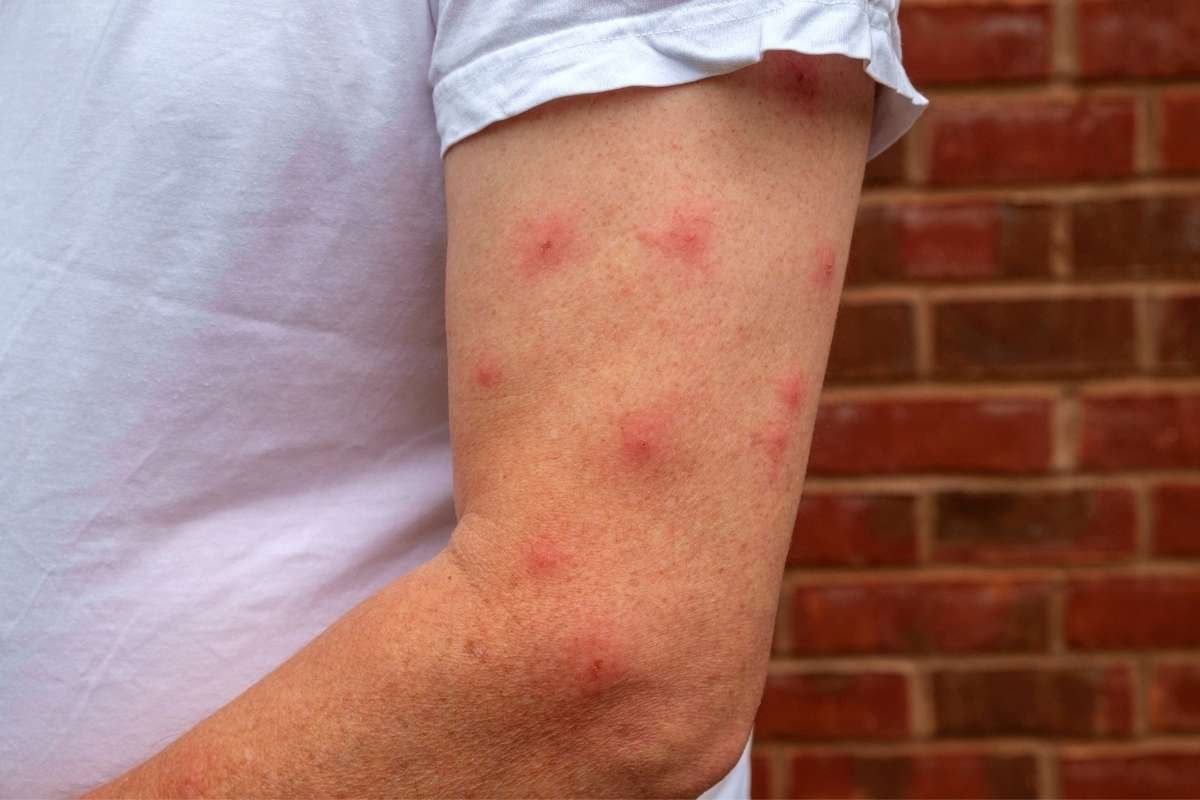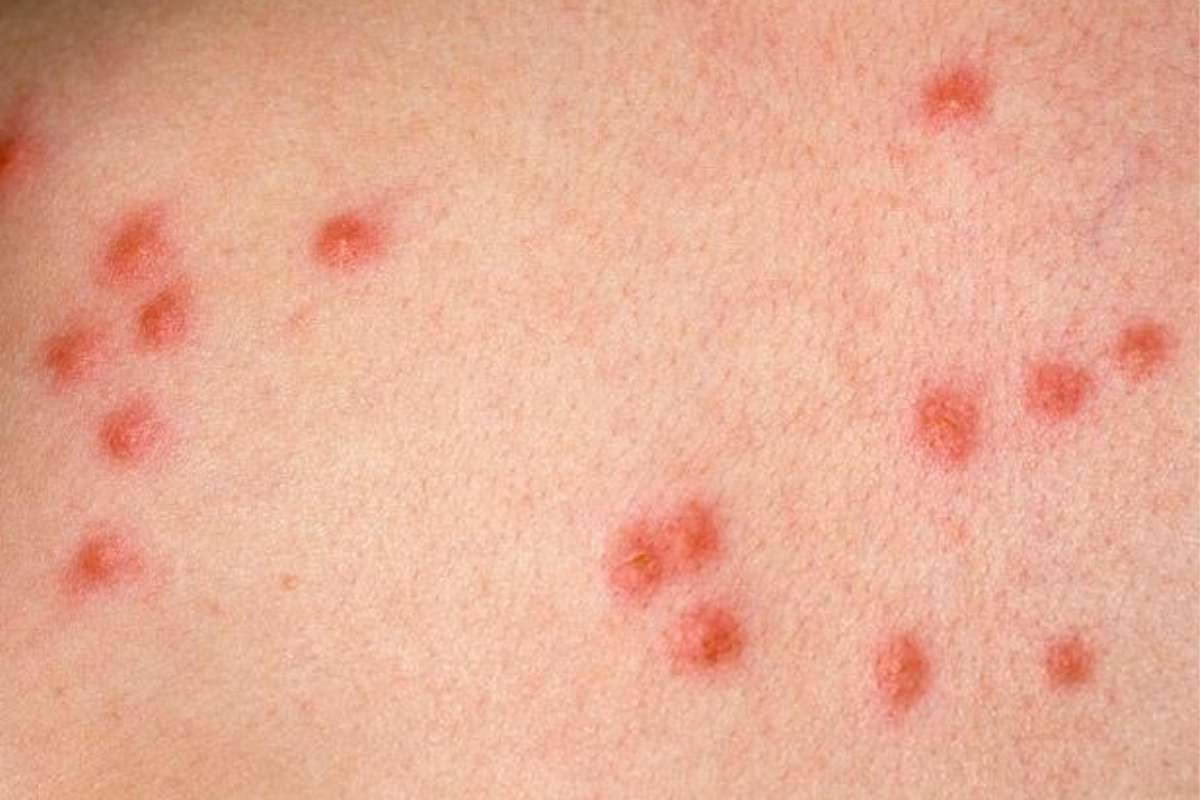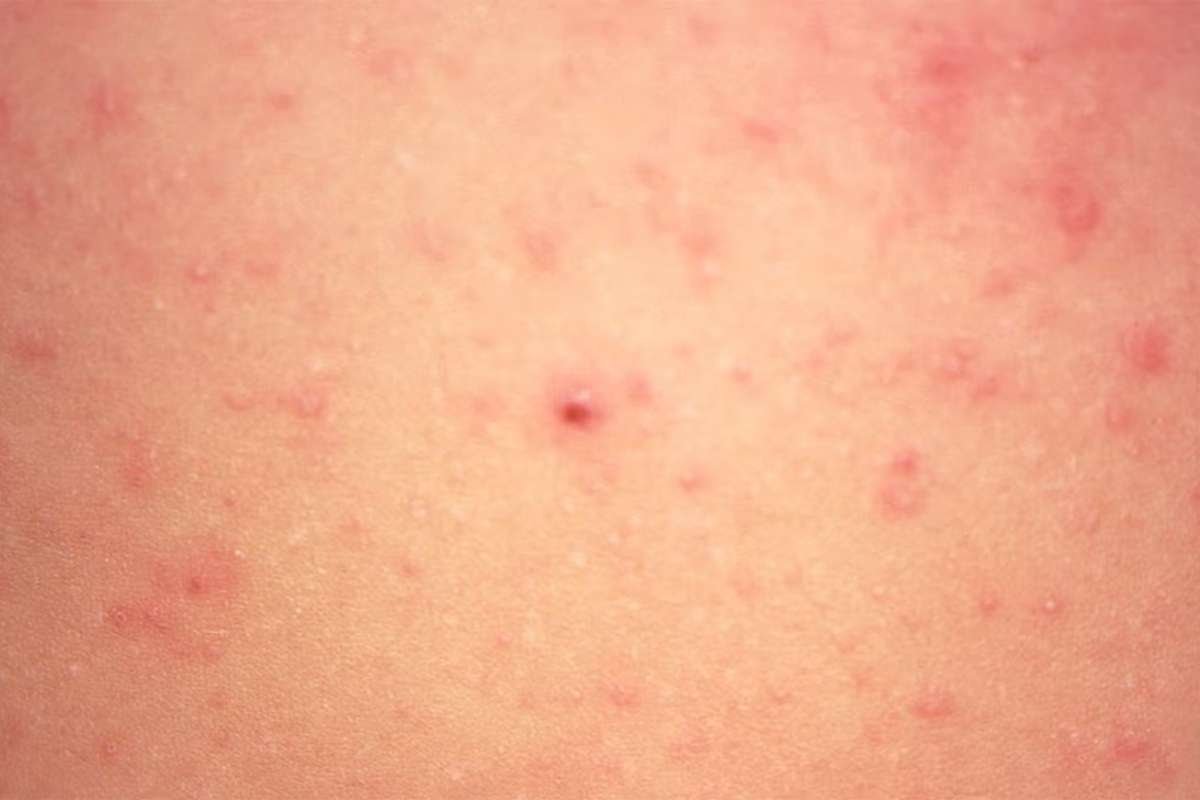How to Identify Common Bug Bites So You Don’t Panic Next Time?
How to Identify Common Bug Bites So You Don’t Panic Next Time?
Blog Article
How to Identify Common Bug Bites So You Don’t Panic Next Time?
This article helps you learn how to identify common bug bites simply. It covers symptoms, causes, and treatments for 20 types of bites. You’ll also find home remedies, prevention tips, and warning signs. Stay safe with this complete and clear bug bite identification guide.

- Source: Image by ChrisAt from Getty Images
We are all connected to each other globally by love, stories, and bug bites.
However, some bug bites can lead to allergic reactions, infections, or even serious diseases. Knowing how to identify common bug bites can help you treat them quickly and avoid future problems.
This guide breaks down 20 common types of bug bites, how to recognize them, why they happen, and their treatment.
Why It’s Important to Know the Bug That Bit You?
Understanding how to identify common bug bites can protect your health. Each bite may look similar, but it comes from a different insect. Some bites heal on their own, while others need medical care. Early recognition leads to faster relief and fewer risks.
List of 20 Common Bug Bites and How to Identify Them


1. Mosquito Bite
A mosquito bite leaves a red, itchy bump. It usually swells a bit but isn’t serious. Female mosquitoes bite to drink blood. They get attracted by your body heat and breath. Use ice or anti-itch cream to feel better.
- Symptoms: Red bump, itchy skin, mild swelling.
- Cause: Female mosquitoes feed on blood.
- Why It Happened: Attracted to body heat, sweat, and carbon dioxide.
- Treatment: Apply cold compress, antihistamines, and anti-itch creams.
2. Bed Bug Bite
Bed bug bites show up as red bumps in a row. They itch a lot and often appear after sleeping. These bugs hide in beds, clothes, or couches. They bite at night while you sleep. Wash the area and bedding to stay safe.
- Symptoms: Small red bumps in a straight line, intense itching.
- Cause: Bed bugs feed on blood at night.
- Why It Happened: Infested beds, couches, or clothing.
- Treatment: Clean bites with soap, use anti-itch cream, and wash bedding.
3. Flea Bite

- Symptoms: Clusters of small red bumps, mostly on ankles and legs.
- Cause: Fleas from pets or carpets.
- Why It Happened: Fleas jump from animals to humans.
- Treatment: Clean area, apply antiseptic, treat pet and home.
4. Tick Bite
A tick bite may look like a red dot or bullseye rash. Ticks stick to the skin and feed on blood. It happens during hikes or in grassy places. Carefully remove the tick and clean the skin. Watch for fever or rash later.
- Symptoms: Red spot or rash, sometimes a bullseye shape.
- Cause: Ticks embed in skin to suck blood.
- Why It Happened: Outdoor walks, grassy or wooded areas.
- Treatment: Remove the tick with tweezers, clean the wound, and watch for symptoms.
5. Spider Bite
Spider bites can cause a red, painful bump. Some bites may swell or form a blister. Spiders bite when they feel trapped or touched. They hide in dark corners or shoes. Clean the bite and use ice; see a doctor if needed.
- Symptoms: Painful red bump, swelling, or blistering.
- Cause: Spiders bite when threatened.
- Why It Happened: Contact with spiders in hidden spots.
- Treatment: Clean bite, apply cold compress, and seek help if swelling worsens.
6. Chigger Bite
Chigger bites cause extreme itching and red welts. They mostly appear near the waist or ankles. These bugs live in tall grass and bite during walks. Shower right away after being outside. Use calamine lotion to stop the itch.
- Symptoms: Intense itching, red welts, often around the waist or ankles.
- Cause: Chigger larvae burrow into skin.
- Why It Happened: Walking through tall grass.
- Treatment: Shower quickly, use calamine lotion, and antihistamines.
7. Lice Bite
Lice bites make your scalp very itchy. You may see tiny red bumps in your hair. Lice spread through head contact or shared items. They live close to the scalp and feed on blood. Use lice shampoo and wash clothes in hot water.
- Symptoms: Itchy scalp, small red bumps.
- Cause: Head lice feed on scalp blood.
- Why It Happened: Close contact or sharing personal items.
- Treatment: Use medicated shampoo, wash bedding and clothes.
8. Horsefly Bite
A horsefly bite is large, painful, and red. It may swell and feel sore for a while. Female horseflies bite near lakes or farms. They’re drawn to sweat and movement. Clean the bite and use a pain reliever if needed.
- Symptoms: Painful, swollen, red bump.
- Cause: Female horseflies bite to feed.
- Why It Happened: Outdoor areas near water.
- Treatment: Clean bite, apply antiseptic, and take pain relievers if needed.
9. Mite Bite
Mite bites cause an itchy rash or red dots. Mites can burrow into the skin or just bite. It often happens after touching dusty items or animals. These bites are not always easy to spot. Use anti-itch cream and keep areas clean.
- Symptoms: Red itchy rash or small bumps.
- Cause: Mites burrow or bite the skin.
- Why It Happened: Contact with infected animals or dusty places.
- Treatment: Antihistamines, steroid creams, and clean surroundings.
10. Sandfly Bite
Sandfly bites leave a red bump that itches. Some bites can even cause a mild fever. Sandflies bite in the evening or at night. They live in warm, dry places. Use lotion and avoid scratching the bite.
- Symptoms: Red bump with itching, may cause fever in some cases.
- Cause: Sandflies bite during dusk or night.
- Why It Happened: Presence in tropical or semi-arid climates.
- Treatment: Cool compress, anti-itch lotion, and avoid scratching.
11. Bee Sting
A bee sting feels sharp and painful. The area becomes red and swollen. Bees sting when they feel in danger. This often happens near flowers or bare feet. Remove the stinger and apply ice right away.
- Symptoms: Sharp pain, swelling, redness.
- Cause: The Bee defends itself by stinging.
- Why It Happened: Disturbing a hive or walking barefoot.
- Treatment: Remove the stinger, apply ice, and take a pain reliever.
12. Wasp Sting
A wasp sting burns and causes swelling. It can sting more than once. Wasps get aggressive if their nest is disturbed. You might get stung during outdoor work. Apply a cold pack and take medicine if the swelling is bad.
- Symptoms: Burning pain, red, swollen area.
- Cause: Wasps sting multiple times.
- Why It Happened: Threat to nest or accidental contact.
- Treatment: Ice compress, antihistamine, seek help if allergic.
13. Ant Bite (Fire Ant)
Fire ant bites burn and turn into red bumps or blisters. It hurts a lot and can last for hours. These ants attack when their nest is disturbed. You might get bitten while walking near ant hills. Clean the area and use cream for relief.
- Symptoms: Burning pain, red spots, pus-filled blisters.
- Cause: Fire ants bite and sting.
- Why It Happened: Stepped near the mound or disturbed ants.
- Treatment: Wash area, apply cold pack, use topical cream.
14. Scabies Bite

- Symptoms: Intense itching, small bumps or lines.
- Cause: Mites burrow and lay eggs in the skin.
- Why It Happened: Skin contact with an infected person.
- Treatment: Prescription creams, wash linens in hot water.
15. No-see-um Bite
These tiny bugs bite and leave itchy red dots. The bite is often not noticed right away. They are common near water during dusk. Their bites are worse than mosquitoes for some. Take a cool bath and use lotion to stop itching.
- Symptoms: Small, itchy red dots, often unnoticed at first.
- Cause: Bites from tiny biting midges.
- Why It Happened: Near water bodies during sunrise or sunset.
- Treatment: Anti-itch creams, cool baths, and avoiding scratching.
16. Deer Fly Bite
Deer fly bites are painful and leave a red bump. The area may swell and itch a lot. They bite during warm weather in wet areas. Female deer flies bite to feed. Clean the skin and apply something cool to soothe it.
- Symptoms: Painful bite, swelling, and an itchy red bump.
- Cause: Female deer flies bite to feed.
- Why It Happened: Outdoor exposure in humid climates.
- Treatment: Ice the area, use an antiseptic, and rest.
17. Blackfly Bite
Blackfly bites swell and burn a little. They usually bite the neck, face, or arms. These bugs live near rivers or streams. They bite during daylight hours. Use ice and take medicine if it feels sore.
- Symptoms: Swollen area with itching and burning.
- Cause: Blackflies bite exposed skin.
- Why It Happened: Close to running water in warm months.
- Treatment: Wash area, cold compress, and anti-inflammatory meds.
18. Caterpillar Sting
Some caterpillars have tiny hairs that sting. The sting can cause a rash or even make you feel sick. This happens when gardening or touching leaves. The hairs break the skin and release toxins. Use tape to remove hairs, then wash and ice.
- Symptoms: Red rash, itching, possible nausea.
- Cause: Caterpillar hairs or spines contain venom.
- Why It Happened: Accidental touch while gardening.
- Treatment: Remove hairs with tape, wash the area, and apply ice.
19. Blister Beetle Bite
This beetle doesn’t bite but causes blisters when crushed. The fluid it releases burns the skin. It happens when handling bugs outdoors. Avoid touching them with your bare hands. Wash the skin and don’t pop the blisters.
- Symptoms: Blisters, burning sensation.
- Cause: Beetle fluids irritate the skin.
- Why It Happened: Skin contact with a crushed beetle.
- Treatment: Clean the area, don’t pop the blister, and apply topical antibiotics.
20. Thrips Bite
Thrips leave tiny red marks that itch slightly. They pierce the skin while feeding on fluids. This happens in gardens or around flowers. You might not feel the bite at first. Wash with soap and use lotion to calm the skin.
- Symptoms: Tiny red marks, itch, mild irritation.
- Cause: Thrips pierce the skin for fluid.
- Why It Happened: Contact with garden or flowering plants.
- Treatment: Wash with soap, apply ice, and soothe with lotion.
Similar Article:
- Understanding and Treating Gnat Bites: Tips for Relief and Prevention
- How to Recognize and Treat Allergic Reactions?
- Demystifying Red Spots on Skin: Causes, Symptoms, and Treatment Options
How to Identify Common Bug Bites on Different Body Parts?

“Most bug bites are harmless, but some can spread serious diseases like Lyme, Zika, or dengue. Early identification and care can prevent long-term complications.”
Bug bites appear on all parts of the body, but certain bugs prefer specific areas. For instance, bed bugs often bite the arms, neck, or face. Fleas prefer the legs and ankles. Ticks may attach to the scalp or groin. Knowing where a bite shows up helps understand how to identify common bug bites effectively.
General Symptoms You Should Never Ignore
- Swelling beyond the bite
- Fever or chills
- Trouble breathing
- Dizziness or nausea
- Rash spreading beyond the bite site
If you see any of these signs, don’t delay. Get medical help right away. Knowing how to identify common bug bites helps, but not all reactions are mild.
Treatments You Can Try at Home
Many bug bites can be treated easily at home. Here is what works best:
- Cold compress: Reduces swelling and pain.
- Antihistamine: Fights itching.
- Hydrocortisone cream: Soothes inflammation.
- Aloe vera gel: Cools and calms skin.
- Baking soda paste: Natural relief for itchy skin.
Clean the bite first. Avoid scratching. Cover the area if needed. These small steps are key when learning how to identify common bug bites and manage them safely.
- According to the Mayo Clinic, over-the-counter remedies like hydrocortisone cream and oral antihistamines are typically effective for mild insect bites unless symptoms worsen.
- The World Health Organization (WHO) recommends keeping your environment clean and using protective wear in tropical or rural areas, especially where vector-borne diseases are common.
Preventing Bug Bites in the First Place
Prevention is just as important as treatment. Here’s how you can lower the chances of getting bitten:
- Use insect repellent (with DEET or picaridin).
- Wear long sleeves and pants in wooded or grassy areas.
- Sleep under a mosquito net while traveling.
- Keep your living space clean and pest-free.
- Wash bedding and clothing often.
Prevention makes it easier to avoid needing to identify bug bites later.
- The Environmental Protection Agency (EPA) recommends insect repellents containing ingredients like DEET, oil of lemon eucalyptus, or picaridin for safe and effective bug protection.
When to See a Doctor?
Most bug bites are harmless, but you should see a doctor if:
- The bite area gets worse after 48 hours
- There’s pus or oozing.
- You have signs of a fever.
- You feel dizzy or short of breath.
“Always monitor symptoms and consult a doctor if things worsen.”
These signs might point to a reaction, infection, or illness like Lyme disease or dengue. Knowing how to identify common bug bites is the first step. Acting on that knowledge is just as important.
Final Tips for Safe Recovery
- Keep a photo log of the bite for tracking changes.
- Note the time and place where you may have been bitten.
- Avoid folk remedies that might irritate the skin.
- Stay updated on bug activity in your area during certain seasons.
Learning how to identify common bug bites is a skill that comes in handy not only during outdoor activities but even at home.
Conclusion
From mosquitoes to mites, many tiny creatures bite. Some are harmless, while others need medical attention. Knowing how to identify common bug bites helps you stay safe, treat symptoms early, and protect yourself and your loved ones. With the knowledge from this guide, you’re now better prepared to handle those unexpected bites the smart way.